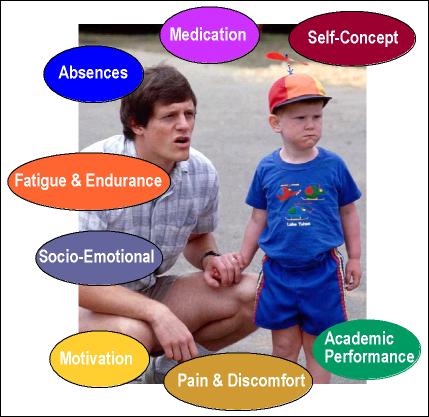| ESE424 : The Class : Mild Disabilities : OI : Characteristics | |||||
Characteristics of Children with Orthopedic and Other Health Impairments
Characteristics
The range of characteristics for the children in this topic is equally as broad as the types and variety of conditions you have reviewed. It is important for you to note that the characteristics of children with orthopedic or health impairments exists on a continuum. These children demonstrate some of the same characteristics that we all show. There are a few, however, that should be reviewed because they are more often noted in this population of children. The graphic below links to other information about some of the specific characteristics of children with orthopedic and health impairments. Click on each link for more detalied information.

[Pain and Discomfort] [Fatigue and Endurance] [Medications] [Socio-Emotional] [Motivation] [Self-Concept] [Absences] [Academic Performance]
Once you have finished you should:
Go on to Effects
of Orthopedic Impairments
or
Go back to Orthopedic
and Health Impairments
E-mail Larry Gallagher at Larry.Gallagher@nau.edu
Copyright © 2000 Northern Arizona
University
ALL RIGHTS RESERVED